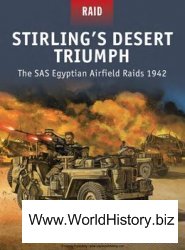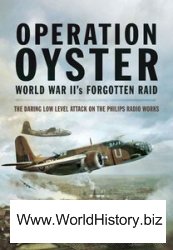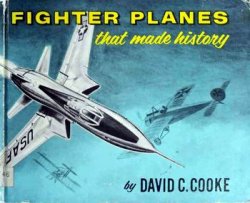STANDARD AIR LINES (1): United States (1926-1934). On February 3, 1926, Jack Frye, president and new owner of the Los Angeles-based flying school Aero Corporation of California and the first man to land an aircraft on Catalina Island, establishes his company’s air transport division under the name Standard Airlines. At age 23, the new CEO is the nation’s youngest airline head. Frye, who will later win fame with Transcontinental and Western Air Lines (TWA), next acquires two Fokker Model 8 Universals and a nondescript single-engine Fokker F-VIIa christened The Texan.
Employing The Texan, Frye and his associates, Walter Hamilton and Paul Richter Jr., the latter fresh from aerial work on the motion picture Hell's Angels produced and directed by a young Howard Hughes, inaugurate scheduled service from Los Angeles to Tucson via Phoenix, on November 28, 1927. On those flights where ladies are passengers, a stop is made at Desert Center, California, where a gas station offers women’s restroom facilities. Standard is incorporated under the laws of Nevada on May 1, 1928, at which point its fleet comprises upwards of 5 Fokker F-10As and 4 Model 8 Super Universals.
On February 4, 1929, President Frye announces the inauguration of the nation’s first transcontinental air-rail service. It will take six months to carry out the claim. That day, the company’s Fokkers extend the Tucson route to El Paso via Douglas. There, passengers can deplane and board the Texas & Pacific Railroad for Sweetwater. The old F-VIIa The Texan is lost in a crash at Beaumont, California, on March 29 (four dead). Three new Fokker F-10As are received in July and one is christened The Texan in honor of the earlier aircraft.
On August 4, Standard aircraft begin picking up T & P passengers at Sweetwater and flying them on to Oklahoma City, where they transfer to Ford 5-ATs of Southwest Air Fast Express (SAFE) for completion of their journey to St. Louis. There they again deplane and connect with the air-rail service of Transcontinental Air Transport (TAT) and the New York Central Railroad. Begun as the first transcontinental air-rail service, Frye’s effort, when finished, is actually the third behind Transcontinental Air Transport (TAT) and Universal Aviation Corporation. When weather and other conditions are right, intrepid passengers can make the California to New York trip in 43 hrs. 40 min.
A year of operating the Los Angeles-El Paso route is celebrated on February 4, 1930; 97% of all flights scheduled have been completed over what company public relations refers to as “The Fair Weather Route.” The enterprising Standard becomes a tempting takeover target in the expansion plans of larger rivals and on May 1 it is purchased by Harris “Pop” Hanshue’s Western Air Express (W. A.E.).
Although Hanshue allows Frye and Richter to continue operations as a separate division, circumstances prevent W. A.E. from moving further east at this point and in October the subsidiary’s route is sold to American Airways. Standard exists on paper until July 27, 1934, when it is formally dissolved.
STANDARD AIR LINES (2): United States (1945-1949). Stan Weiss and Charles Sherman found Fireball Air Express at Long Beach, California, in November 1945. Employing Douglas C-47s, the company inaugurates revenue services in early 1946, flying to New York via Kansas City and Chicago. In 1947, the name is changed to Standard Air Lines and a CAB certificate (as a Large Irregular Carrier) is sought and obtained.
Governor Thomas E. Dewey’s August 2, 1948 flight from La Guardia Airport to Idlewild Airport spurs a dispute between the nonscheduled Standard and those scheduled carriers serving New York. Four days later, the company’s transcontinental flights are ordered suspended by the CAB after the company admits in hearings to its near-regular operations and violations of rate rules. SAL continues operations apace.
In the first such move, the CAB, on June 21, 1949, upholds the Justice Department action against SAL for allegedly continuing to run unauthorized near-regular transcontinental operations. Countering, the airline cites confusion over the government’s use of the term of “contract carrier” to describe its operations.
En route from Los Angeles to New York on July 13, a C-46E with 4 crew and 44 passengers crashes into Mount Chatsworth 30 mi. W of Los Angeles, reportedly as the result of a fight between two passengers; there are no survivors. The CAB will later determine that the scuffle was of no significance in the disaster; the pilot had been flying too low.
When the airline is ordered out of business on July 20, it complies and disbands.
STANDARD AIRWAYS (1): United States (1946-1969). Standard Airways is formed in Seattle in 1946 and for the next 18 years offers charter passenger and all-cargo services throughout the Northwest. The fleet is upgraded from its original Douglas DC-3s to DC-7s and, later, to DC-9-15s. In 1961, a Trans-Canada Airlines, Ltd. L-1049E is purchased. A second former Canadian L-1049 is purchased on August 3, 1962 while a former Trans World Airlines (TWA) L-1049A is leased from California Airmotive later in the year.
As the result of an in-flight propeller failure, a Lockheed L-1049E Super Constellation with 70 aboard crashes while attempting an emergency landing at Manhattan, Kansas, on May 28, 1963; fortunately, only one passenger is seriously injured. Due to heavy losses, operations cease on January 31, 1964.
The carrier’s assets are purchased by Frank B. Lynott in early 1966. In April, Standard is one of 10 supplementals to win permanent certification. Two ex-Qantas Empire Airways (Pty.), Ltd. Boeing 707-138Bs are acquired and join a DC-7 and two DC-9-15s when Standard resumes operations on July 17. The CAB grants route authority for Canada and Mexico on December 15.
Revenues are $1,836,294. Start-up costs cause losses: $254,662 (operating) and $319,371 (net).
Following the delivery of the two ex-Australian aircraft on April 1, the fleet remains unchanged in 1967 and by year’s end, the employee population numbers 175. One of the new Boeings is wet leased to Canadian Pacific Air Lines, Ltd. (CPAL) on October 15.
A total of 173,108 passengers are carried during the first full year. Despite revenues of $10,844,733, the operating loss is also higher at $1,709,440. The net loss is $1,767,035.
A third B-707-138B is obtained from the Australian flag line in 1968, allowing replacement of the Boeing wet-leased to the Canadians, which, as the Empress of Sydney, had been lost in a Vancouver landing accident on February 7.
Revenues accelerate by 9.7% to $11,894,909, but losses also grow, both operating ($2,275,316) and net ($4,135,559).
Early in 1969, two Convair CV-440s are delivered, succeeding the withdrawn DC-7. Domestic and international flights continue until the carrier suspends operations for fiscal reasons on July 31. Unable to restart, Standard shuts its doors permanently on September 24.
STANDARD AIRWAYS (2): United States (1966-1967). The second Standard Airways is set up at Pontiac, Michigan, in the early summer of 1966 to provide scheduled passenger and cargo services to destinations in Michigan and Ohio. Employing 1 each Beech 18 and Piper PA-31310 Navajo, Standard inaugurates daily roundtrips on July 25 linking Detroit with Cleveland’s Lakefront Airport via Pontiac and Port Huron. The service can only be maintained for a year.
STAR (SOCIETE DE TRANSPORT AERIEN DU RWANDA, S. A.): Rwanda (1964-1994). Organized by A. Milligan at Kigali in 1964, STAR undertakes local and regional passenger and cargo charter and contract service flights.
Services are maintained over the next two decades with a fleet that comprises 1 Piper PA-31-310 Navajo, 2 Britten-Norman BN-2 Islanders, and several Aero Commander 500s. A Boeing 707-328C is placed into service in the mid-to-late 1980s.
Operations are suspended during the 1992-1994 civil war.
STAR AIR, A. S.: Copenhagen Airport South, Dragoer, DK-2791, Denmark; Phone 45 3231 4343; Fax 45 3231 4390; Http://www. maersk-air. com/html/com/html; Code SRR; Year Founded 1987.
Star is organized at Copenhagen Airport South in 1987 as a wholly owned subsidiary of the AP Moller Group, owners of Maersk Air, A. S. Scheduled and charter operations are undertaken for both passengers and cargo on a regional basis. Additionally, several routes are started on behalf of various air courier companies. President Povi Arnold Jur-gensen’s initial fleet comprises 3 Fokker F.27-600s.
Operations continue apace in 1988-1990 and a fourth F.27-600 is acquired in 1991. Late in 1992, President Jurgensen negotiates a new long-term contract with UPS (United Parcel Service) to operate intraEuropean all-cargo flights. Based at the UPS European distribution center at Cologne, the carrier leases one each Boeing 727-22QC (RE) and B-727-31QC(RE) from UPS and places them on the Danish aircraft register. Flying under Danish regulations but in UPS colors, Star initiates primarily night frequencies to several European locations.
Airline employment stands at 65 in 1993 and 2 F.27-600s are withdrawn.
The workforce is cut to 50 in 1994 as an F-27-500 is leased from Jersey European Airways, Ltd. Services are increased in 1995, employment grows to 80, and Bjame Hansen is named president.
In 1996, the fleet contains 3 each B-727-22Cs and B-727-31Cs plus 1 B-727-180C; all are flown on behalf of UPS (United Parcel Service).
Flights are maintained in 1997-2000, during which years the carrier regularly visits Athens, East Midlands, Edinburgh, Lyon, Nuremberg, Oporto, Turin, Toulouse, and Treviso.




 World History
World History









